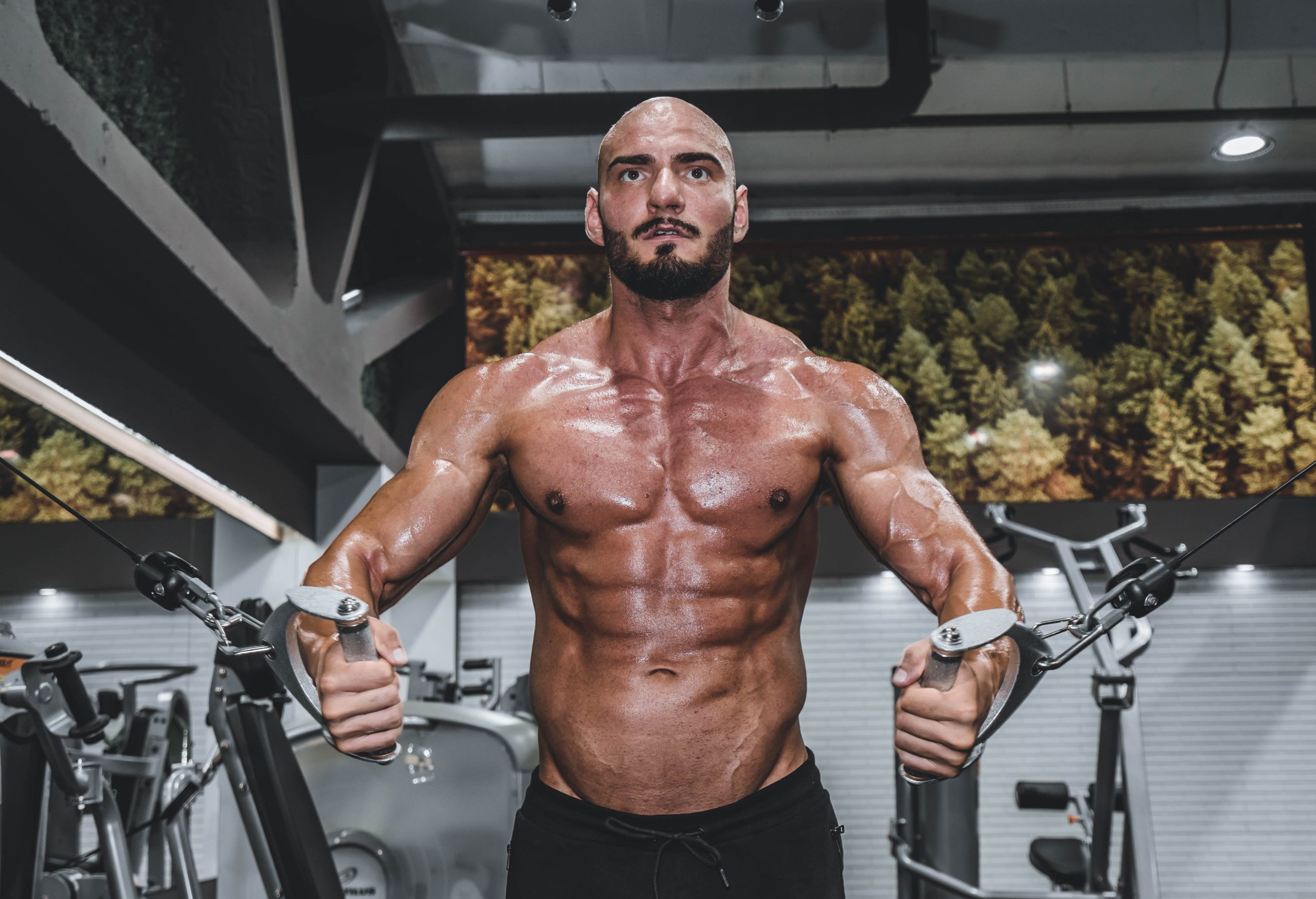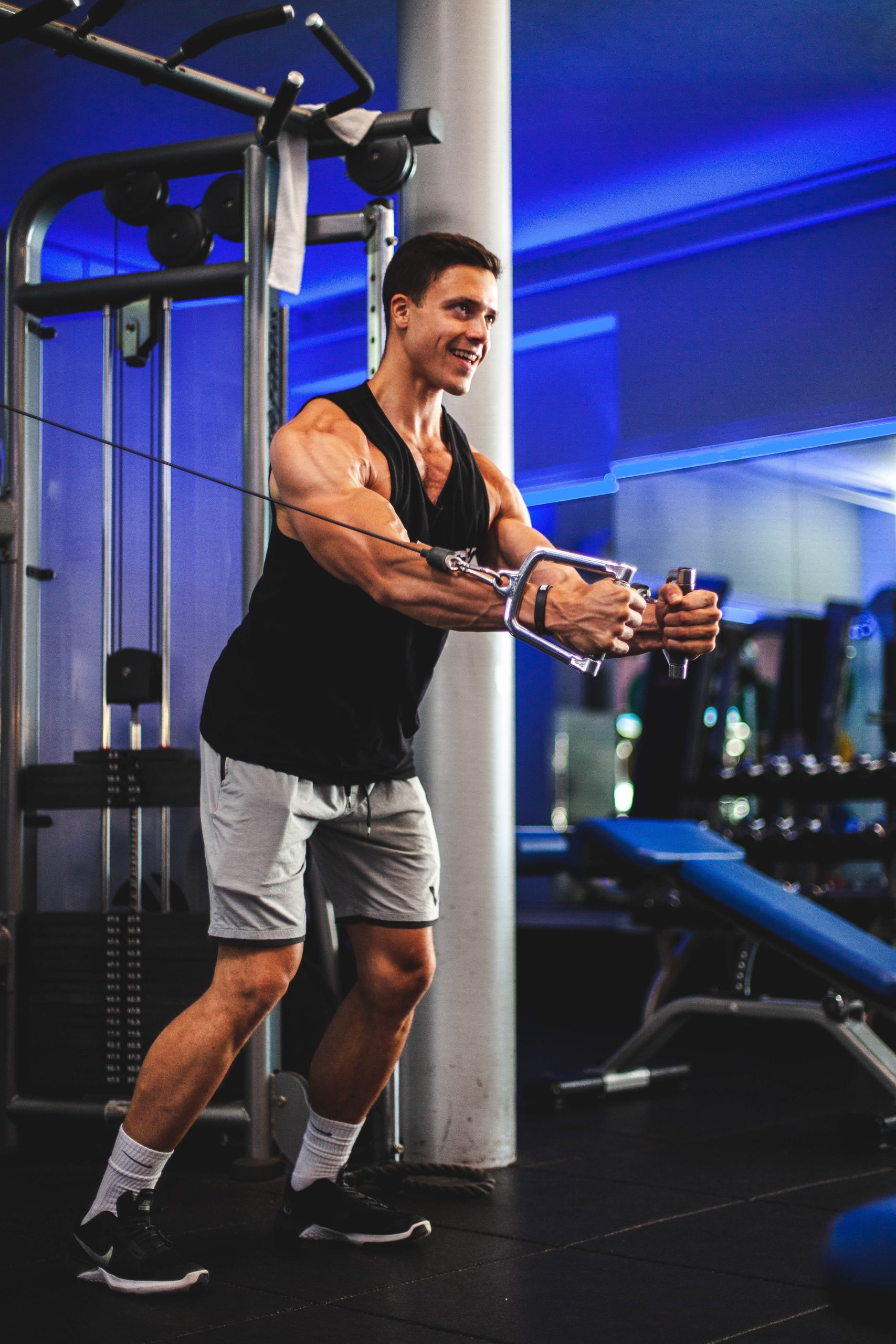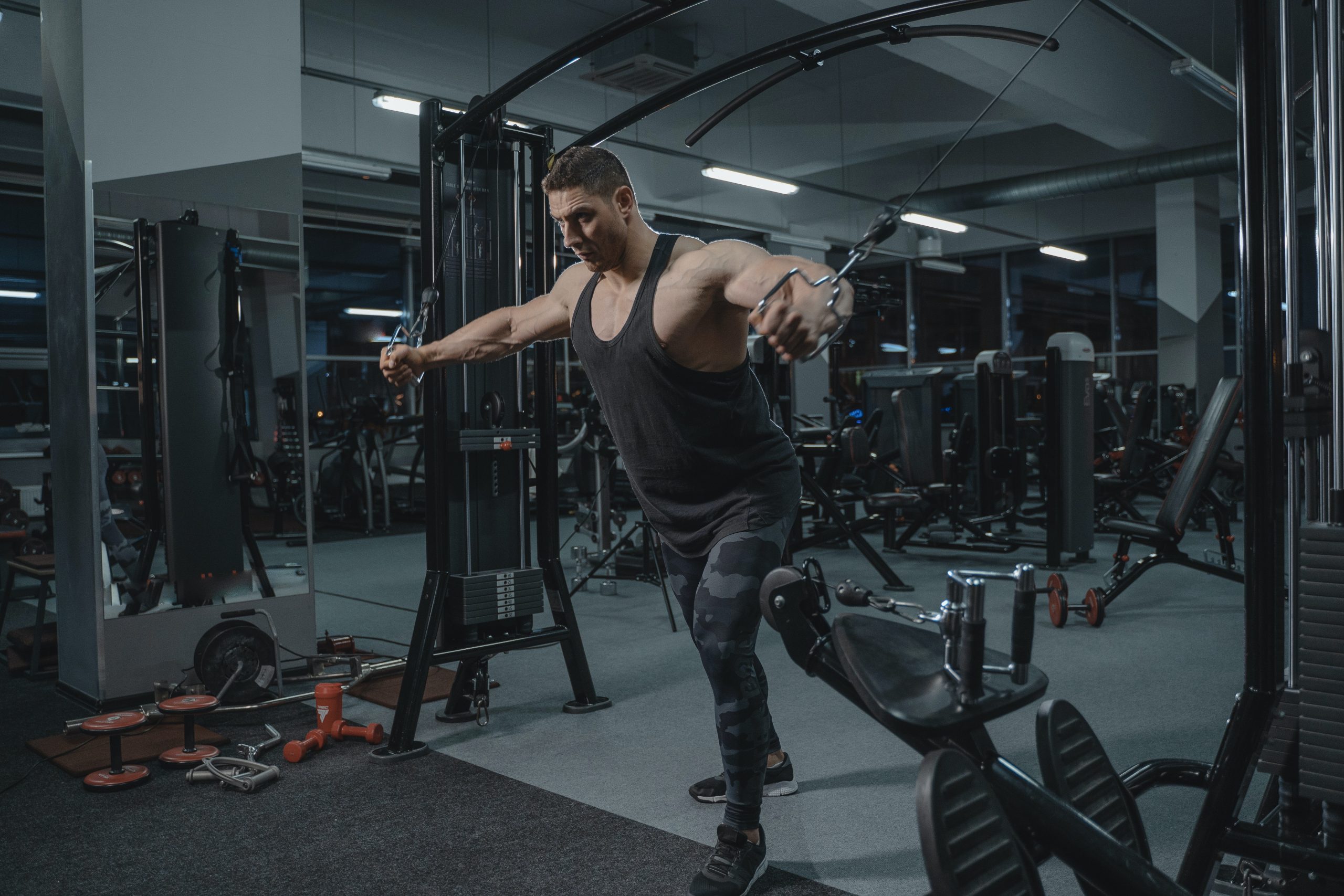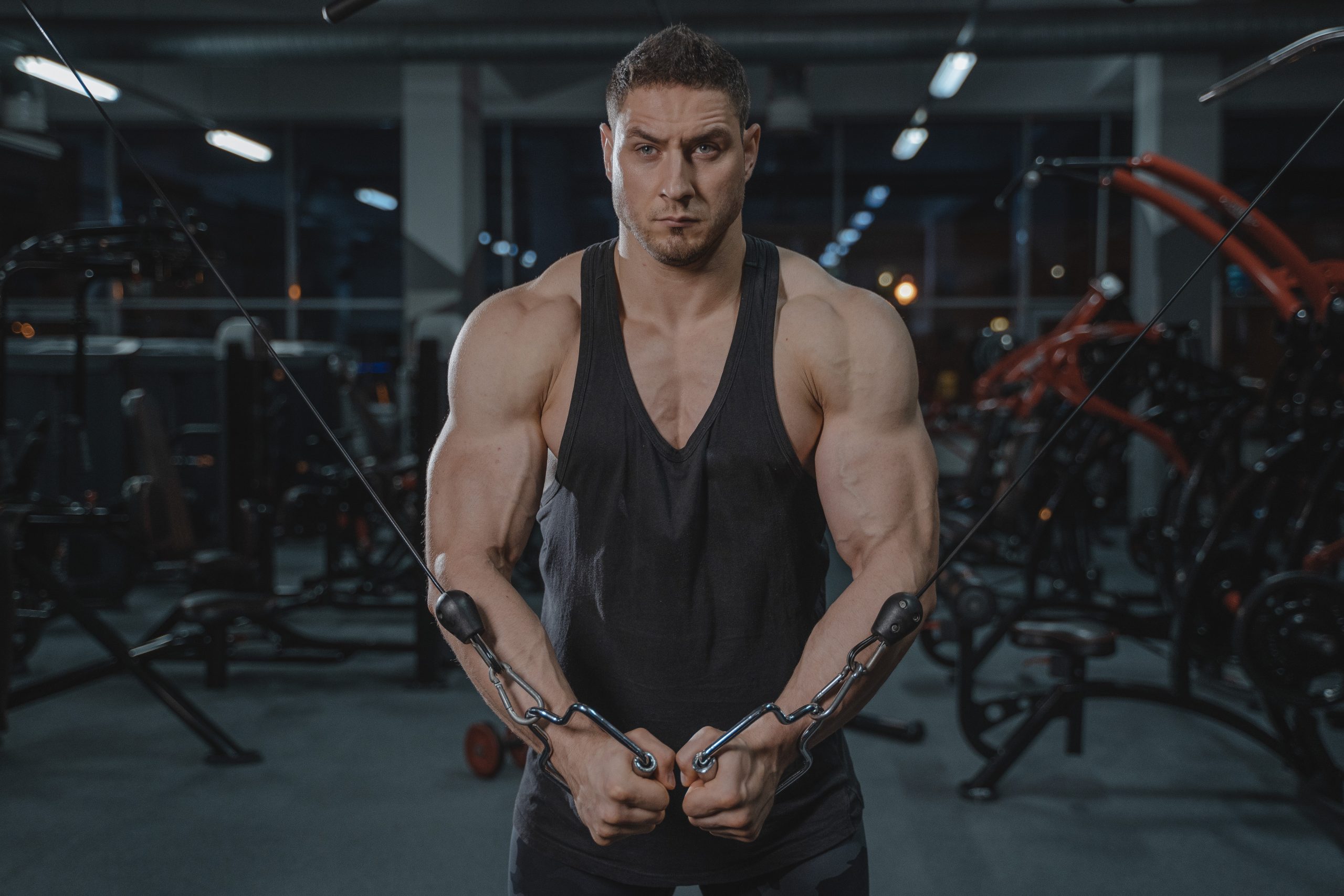Bench presses typically dominate or have become the first go-to exercise in most gym routines. But some exercise movements, like cable crossover training, are actually effective when it comes to building upper body strength and mass.
Cable crossover or cable cross is a highly effective exercise to strengthen the upper chest and carries many advantages that other routines don’t. This workout is perfect for people who are unable to sit on bench seats to lift plates or dumbbells in a single motion.
If you’re looking to mix up your workout routine, then cable exercises are an excellent and enjoyable workout idea.
Let’s see how it works with cable crossover cables.
- What is the Cable Crossover Exercise?
- What Does Cable Crossover Work on?
- How Do You Set Up a Cable Cross?
- How To Do The Cable Crossover Workout?
- Cable Crossover / Cable Flyover
- Cable crossing with resistance bands
- Do Cable Crossovers Build Mass?
- Is the Cable Crossover a Good Exercise?
- Extra Workout Tips for the Cable Crossover
- How Many Reps Should You Do for the Cable Crossover?
- Don’t Forget to Warm Up
What is the Cable Crossover Exercise?
The cable crossover exercise is a workout routine where the person stands in the middle of a cable machine, a cable held in each hand. It works the arms and chest by having the hands cross over the midline of the body repetitively.
The cables are also attached to heavy weights that require a huge amount of power to lift. The key to this exercise is mindful breathing as well as steady movements.
What Does Cable Crossover Work on?
The pectoral, shoulder and back muscles are the main muscles that cable crossover workouts target.

Many bodybuilders prefer this workout as it works the upper and lower chest muscles in ways bench presses do not.
How Do You Set Up a Cable Cross?
The first thing you should do with cable machines is to check the height of the pulleys. They should be at the same height as your head. This will ensure that the right muscles are being targeted during your entire workout.
Grab the handles and step forward, a few feet away from the cable station should do. This is to test whether the weight that you’re lifting doesn’t touch the rest of the stack during your pulls.
How To Do The Cable Crossover Workout?
Start by setting the cable handles on the pulleys at the highest point. Next, get into your starting position by standing at the center of the machine, feet shoulder-width apart.

Lean your torso forward, slightly bending at an angle while keeping your back straight and your spine neutral. Your wrist should be facing the floor as you hold on to both handles, and there should also be a slight bend at your elbows.
Tighten your core muscles as you slowly bring both handles in front of you. Next, cross them over across your body. Once you’re in a fully contracted position (your arms are parallel to each other or crossing over the other), squeeze your chest muscles. Hold your position for 4 seconds and slowly get back to the start position.
Keep your elbows bent throughout.
Cable Crossover / Cable Flyover

This routine is the same as the regular cable crossover workout with a slight modification to work out your abdominals muscles, legs and glutes.
Begin in starting position which is to stand in the middle of the cable machine.
Step your right or left foot forward, about four feet and bend your knee into a lunge. Keep the leg behind your straight.
Take the handles, and with your elbows slightly bent, pull them forward into your chest. Your hands should be pulling the handles under your chest to get your pectoral muscles to raise. Put your chest out and arch your back as you do this exercise. Slowly get back to your neutral position.
Repeat as many times as you see fit.
Cable crossing with resistance bands
Most people don’t have an access to a cable crossover machine. So, how do you do cable crossovers without a cable machine? You can also do the routine using a resistance band. It’s not only easy to make but it allows you to do the workout at home.
Setup: The fly cables will be replaced with a power band. You need something solid and sturdy to attach the bands onto. Use racks attached to the wall or something that won’t budge when you execute the exercise.
Next, attach the resistance strap to your base and you’re good to go.
With this simple DIY, you can now do cable chest press exercises at home.
Do Cable Crossovers Build Mass?
Yes, this exercise is an effective way to build both muscle mass and strength. If you’re not into doing a full cable crossover workout, you can use it as a warm-up.
Is the Cable Crossover a Good Exercise?
Yes, it’s an amazing exercise for the chest. It can also be modified so that it can work the muscles on other parts of your body too.
The pulley mechanism in this workout does wonders for the chest muscles.
Setting them to the highest position allows you to focus on your lower pecs. Meanwhile, setting the pulleys in the highest position will enable you to work on your upper pecs. If you want to target your middle pectoral muscles, then you can place the pulleys at shoulder height and exercise with your arms parallel to the floor.
Extra Workout Tips for the Cable Crossover
As with any workout routine, safety is your number one priority. Here are some tips to ensure that you’re executing this workout safely and correctly.
- Maintain proper body alignment.
Maintaining the proper alignment or body position will ensure that you don’t put any unwanted stress on your shoulders, neck and rotator cuff. Proper form will make sure that you don’t run into a shoulder injury during this exercise.
Proper form includes a straight spine, tight core, and your head properly lifted with eyes looking straight at the mirror or straight ahead.
You can put one foot forward, knees slightly bent so the weight doesn’t pull you backward.
Your shoulder blades should be retracted and depressed. Maintain a slight bend on your elbows to avoid stressing your elbow joints and biceps. Always remember to do this training routine slowly to bring focus to building muscle mass.
- Don’t start heavy.
Start light and slowly build up if you need to. You want to be able to control the weight every time you do reps so you can feel your chest contracting.
- Move with purpose.
Cable crossover workouts don’t work with speed. The more controlled your movements are, the more effective the exercise will be.
Move slowly and don’t swing the cables with the momentum of your pulls.
- Don’t bend your elbows too much.
You do need to pull the handle with your elbows bent but don’t bend them too much as this will take the stress off your chest which will result in less muscle gain.
How Many Reps Should You Do for the Cable Crossover?
You can do 3 to 8 sets of 7 to 12 reps if you want to build your muscles. If you want to work your chest hard, then rest no more than 45 seconds.
Don’t Forget to Warm Up
As with any exercise or chest workout, you need to warm up for the cable crossover. Your shoulders, elbows and chest will be put under a lot of stress so you need to prep them for the workout.
Before starting your sets, move your shoulders, chest, legs and arms in light movements that are similar to the exercise that you’re going to do.
Make sure that your heart rate is elevated to a certain level and that your muscles are warm. You can begin by doing minimal stretches or brisk walking on the treadmill.
Exercise is one of the easiest ways to improve your health. But if you’re still unsure about how to start with a new exercise routine (in this case, cable crossover workouts), then working with a personal trainer would be a good option to make sure that you’re doing the exercise correctly.




